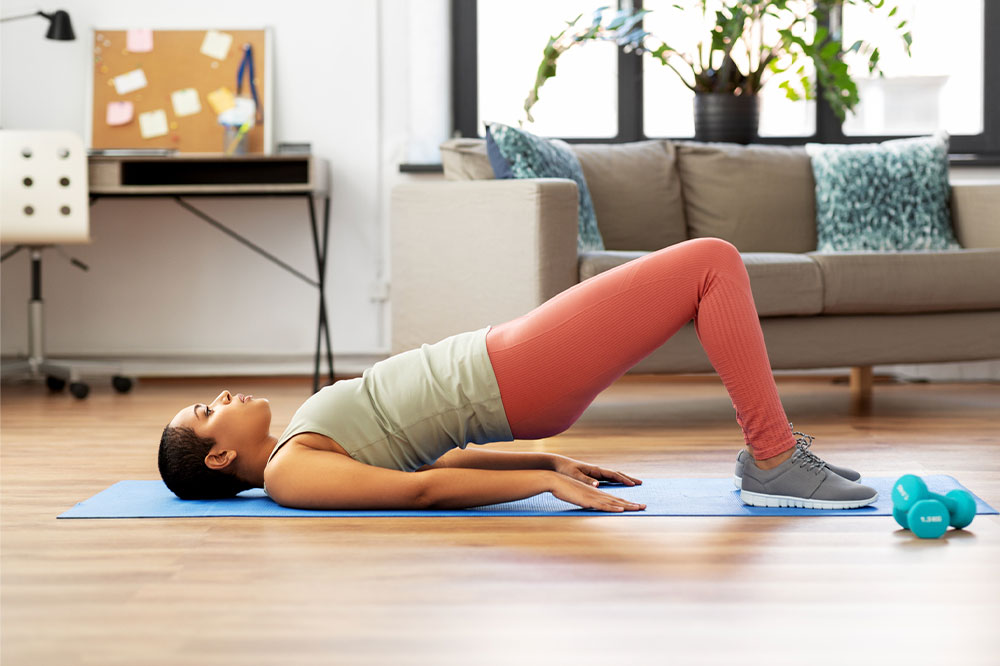
3 ways to deal with an overactive bladder
Overactive bladder (or OAB) is a condition in which one may feel a sudden and frequent urge to urinate as the bladder cannot store urine normally. This condition develops when the urinary bladder muscles contract even when it is not full. People with OAB usually experience frequent urination, persistent urge to urinate, and frequent nighttime urination (or nocturia). Here are a few treatment options, foods, and lifestyle changes to cope with the symptoms:
Treatment options
Doctors can prescribe treatment options to help control muscle spasms and relieve OAB symptoms. Some of the popular options are:
Gemtesa: This is an FDA-approved treatment option for adults that is prescribed for treating symptoms such as the frequent urge to urinate and the inability to hold urine. It can be taken orally once a day and works by activating the beta-3 receptor, which helps the bladder muscles relax. This allows the bladder to hold more urine, reducing the frequency of urination and leakage (or incontinence). Possible side effects of Gemtesa are urinary retention, urinary tract infections, and nasal congestion.
Myrbetriq : This is the brand name for mirabegron, which helps treat an overactive bladder. The oral prescription treatment comes in two forms—extended-release tablets and extended-release granules. The dosage and the form of treatment vary depending on the severity of the symptoms. Myrbetriq helps the muscles near the bladder relax so that it can expand to hold more urine. Possible side effects of this could be increased blood pressure, joint pain, and tiredness.
Toviaz: This option helps treat bladder-related problems like neurogenic detrusor overactivity and OAB. This oral treatment helps reduce the bladder’s muscle contractions that eliminate urine, so Toviaz can reduce incontinence and urgency. Allergic reactions such as the swelling of the lips, tongue, and face and urinary retention are possible side effects of this treatment.
Doctors or physicians can determine the right course of treatment for those affected by OAB. The dosage can vary depending on the severity of the condition, prescription treatment for other illnesses (if any), and response to current treatment.
Foods to eat and avoid with OAB
OAB can be managed and even eliminated by regulating food intake and adding healthier items to meals. However, checking with a physician before changing your meal plans is important. Here are a few food items that can help manage the symptoms:
Pumpkin seeds: The seeds can inhibit specific enzymes in the body to increase testosterone, which can strengthen pelvic floor muscles to provide support for bladder control. The seeds are also packed with omega-3 fatty acids that exhibit anti-inflammatory properties, which can help reduce the urgency to urinate. One can add pumpkin seed oil or extract to their meals.
Corn silk: These are the fine threads accompanying ears of corn that are usually considered waste, however, they can have a soothing effect on the bladder. Corn silk exhibits antioxidant and anti-inflammatory properties that can help restore or strengthen the mucus membranes in the human urinary tract. This can reduce the urge to urinate, relieving the overactive bladder.
Fiber-rich foods : Fibers can prevent constipation, which exerts pressure on the bladder muscles, resulting in incontinence and other urinary issues. So, food items high in fiber content, such as beans, lentils, and oats, can help prevent OAB and relieve the associated symptoms.
Some food items can aggravate the symptoms and irritate the bladder. These items should be avoided when dealing with OAB:
Tea and coffee: Caffeinated drinks can increase bladder activity, which, in turn, can worsen symptoms like urgency and frequency of urination along with incontinence.
Processed foods: These foods contain artificial ingredients, like flavoring and preservatives, that can irritate the urinary bladder, worsening OAB symptoms.
Tomatoes: The fruit and its products, like salsa and ketchup, are extremely acidic and can irritate the bladder, exacerbating the symptoms.
Lifestyle changes
A few modifications in the daily routine can help people effectively manage an overactive bladder. Some easy ways include:
Regular exercise : Kegels or pelvic floor exercises can help strengthen bladder muscles to reduce involuntary contractions. These exercises call for squeezing or tightening the pelvic floor muscles and holding them for a few seconds as one would do to stop urine flow. One must repeatedly work on Kegels for a longer duration each time for better results. Bladder retraining exercises that involve controlling urinary urges are also helpful. Along with exercising, one can control the urge through deep breathing, muscle relaxation, and other similar tactics.
Staying sufficiently hydrated: Although increasing water intake can seem counterproductive, people affected by this condition should ensure they are well hydrated. People with OAB can instinctively reduce fluid intake, and this can lead to constipation, which would strain the pelvic muscles and worsen symptoms. Further, dehydration can lead to an overactive bladder, so ensuring adequate fluid intake is crucial.
Changes in routine: Making healthier lifestyle choices can make a huge impact when dealing with an overactive bladder. Some necessary changes include limiting fluid intake after 8 pm, using protective pads at night, emptying the bladder on a schedule, timing bathroom breaks and fluid intake, and urinating before or taking breaks during long meetings or other events.


